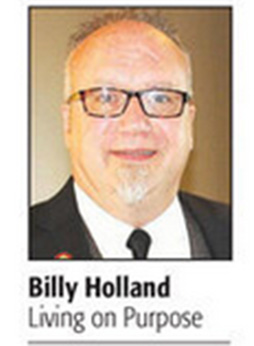When is spring?
Published 6:15 am Tuesday, March 12, 2019
|
Getting your Trinity Audio player ready...
|
By Steve Roark
Tri-State Outside
In our area, spring seems to be a crap shoot with all the cold snaps in between warm ups. And when I looked into it, I found that there is more than one opinion of when spring begins, and so here is a rundown of the possibilities.
For centuries folks have hung their hat on astronomical spring, which this year occurs on March 20, called the Vernal Equinox. These Latin words mean “equal night.” The sun has steadily been creeping higher in the southern sky since December (due to the Earth’s tilt), causing our hours of daylight to get a little longer each day until day and night are equal in length, and that’s the equinox and the beginning of spring.
The sun will continue to move higher in the sky and lengthening the daylight until June 21, the summer solstice and the longest day of the year. From there, it starts dropping lower and reversing the trend. Because it’s based on a very large and precise cosmic clock, the Vernal Equinox is considered to be the official beginning of spring.
Meteorologists have a different opinion, contending that spring should be based on average annual temperature changes each month, and put the first day of spring down as March 1. They like the length of the seasons to be nice and neat on the calendar, with each season being three months long: Spring is March through May, summer is June through August, fall is September through November, winter is December through February — each more or less 91 days long. With the astronomical seasons, spring and summer are 93 days long each, autumn is 90 days and winter is 89 days, so there is some seasonal unevenness here, making the warm seasons 7.5 days longer than the colder fall and winter seasons. This should please all you warm weather people.
One more means of determining when spring occurs is based on biological indicators, when plants and animals do stuff on a regular basis. This is the world of phenology, the study of how plant and animal life respond to seasonal changes during the year. Here spring is based on when certain flowers bloom, tree species leaf out, birds begin their breeding rituals, and even the smell of soil when the micro-beasties living there wake up and go to work decaying organic matter.
Spring has no fixed date, it’s when you see it in nature. This is nothing new. Our ancestors based planting crops on nature observations, such as planting corn when white oak leaves are the size of a squirrel’s ear. Many ecologists divide the year into six seasons, prevernal (early spring), vernal (spring), estival (moister early summer), serotinal (dryer late summer) autumnal (fall) and hibernal (winter).
Truth be told I use some of all three methods when I think of spring, feeling the warmer, longer days and enjoy the flowers begin their parade of blooms. It’s the promise of the return of life to forests and fields, so get out and enjoy it!
Steve Roark is a retired area forester from Tazewell, Tennessee.





